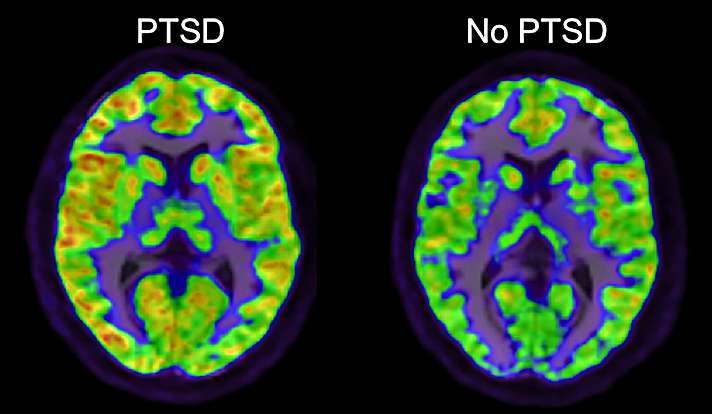Winner of the Fall 2018 StMU History Media Award for
Best Article in the Category of “Military History”
Best Article in the Category of “Science & Technology”
Charles Meyers, a Medical Officer, introduced the term “Shell Shock” to explain symptoms of Post Traumatic Stress Disorder (PTSD) displayed by military after combat in World War I (WWI). Soldiers often experienced symptoms including fatigue, tremor, confusion, nightmares, impaired sight, and impaired hearing. Meyers assumed that these symptoms were caused by the soldiers’ exposure to exploding shells, not necessarily the trauma they were witnessing or going through. In these years, symptoms of widespread PTSD were considered “weak” traits for soldiers by their colleagues and bosses. Even society as a whole started to view these symptoms negatively, which led to the destruction of their relationships after the Shell Shocked soldiers arrived home.1
Military gave Shell Shock victims no sympathy. When soldiers were dismissed from their duties, they were given labels such as “cowardice” or “emotionally weak.” These labels led to soldiers being targeted for abuse from their own side, as well as mock trials in which they were convicted. The pardons they received weren’t honorable, so they were often ashamed of their disorder, which led to more mental issues among the soldiers like depression, anxiety, and even suicide.2

New treatments flipped understandings of how World War I caused drastic changes in the behaviors of these men. Treatment for Shell Shocked victims before Arthur Hurst’s “miracle treatments” were very harsh, as they were often treated with Electroconvulsive Therapy, emotional deprivation, shaming, and solitary confinement. Some of the lesser treatments were hypnosis, massage, rest, and dietary treatments.3
Arthur Hurst primarily used occupational therapy to treat Shell Shocked patients, treating them as humanely and sympathetically as possible. This dignified care allowed for the increased numbers of “saved” soldiers, as they found ways to overcome the abuse and the labels given to them after their dishonorable discharges. Hurst’s treatments became iconic after the Newton Abbott’s Seale Hayne in Devon. Hurst’s approach allowed for 90% of Shell Shocked soldiers to be cured after only a single session.4

Modern day treatments, consist of therapy, as well as new medicines that aid in the control of the symptoms. According to Michael James, a pharmacist, there are Selective Serotonin Reuptake Inhibitors (SSRIs) that block the re-uptake of serotonin in the brain and help with sleep disorders, nightmares, and decreases intrusive thoughts. James also informed me that Serotonin Norepinephrine Reuptake Inhibitors (SNRIs) block the re-uptake of serotonin and norepinephrine in the brain which also decrease intrusive thoughts and provide aid for sleep disorders and nightmares.5
Hurst’s approach led to a change of heart and a consensus to the overall approach by society as a whole. Now, Veterans Affairs, also known as the VA, has a large program that provides aid to veterans with PTSD. However, this evolution of PTSD has not only been beneficial to veterans, but it has also allowed for a more diverse diagnosis of PTSD, in which it is more understood that other people, in addition to veterans, can also experience PTSD. PTSD can be caused from any sort of trauma including car accidents, violent crimes, and domestic violence. Individuals can even develop PTSD from having someone important abandon them as well. The DSM-5 has set a variety of symptoms for PTSD because just like any other disorder, it affects every individual differently. This document allows all individuals to gain access to the tools and help they need to recover from or live with PTSD.6

- Caroline Alexander, “The Shock of War,” Smithsonian Magazine, September 2010, https://www.smithsonianmag.com/history/the-shock-of-war-55376701/. ↵
- “Shell Shock,” BBC Inside Out, March 3, 2004, http://www.bbc.co.uk/insideout/extra/series-1/shell_shocked.shtml. ↵
- “Electroconvulsive Therapy: A History of Controversy, but Also of Help,” The Science Explorer, January 13, 2017, http://thescienceexplorer.com/brain-and-body/electroconvulsive-therapy-history-controversy-also-help; “Arthur Hurst: The Man Who Filmed Shell Shock,” BBC Radio 4, http://www.bbc.co.uk/programmes/articles/4VqPtrjsgcPKtgmYc2M5vXz/arthur-hurst-the-man-who-filmed-shell-shock. ↵
- “Arthur Hurst: The Man Who Filmed Shell Shock,” BBC Radio 4, http://www.bbc.co.uk/programmes/articles/4VqPtrjsgcPKtgmYc2M5vXz/arthur-hurst-the-man-who-filmed-shell-shock. ↵
- Email with Michael James, September 11, 2018. ↵
- Pete Walker, From Surviving to Thriving (Scotts Valley, CA: CreateSpace Independent Publishing Platform, 2013), 13-14. ↵



160 comments
Alicia Guzman
Post-Traumatic Stress Disorder is a frightening and very upsetting side effect of war (and not war). The evolution from the change of Shell Shock and PTSD is outstanding. It is very disheartening that only recently individuals experiencing problems with mental health treated humanely and with dignity. It is heartbreaking to me that veterans would go fight for their country, see some of the worst things humanly possible in war, of course, they are experiencing a change in their mental psyche, yet were brushed aside and considered weak.
Michael Hinojosa
PTSD is a term not many people hear about today and whenever it is mentioned it’s always in a negative connotation regarding the victim rather than the issue as a whole. People always consider those who show emotional vulnerability weak and as such leads to more and more problems that can’t really be addressed without one side getting hurt immensely.
Maya Mani
This article addresses a lot of underlying issues, such as expectations for men struggling with PTSD. Sadly they are pressured to hide their suffering, or else they will be portrayed as weak or cowardly. I also can’t believe there was not any sympathy for them. There is not nearly as much stigma with PTSD as there was before, but it still is not being talked about enough.
Eric Ortega Rodriguez
PTSD is something I do not hear much about in the world of today. As I read the article, I really admire Arthur Hurst for treating Shell Shocked patients with such care and sympathy. I was angered to read that Shell Shock soldiers were seen as emotionally weak when many can argue that being a soldier on itself requires lots of physical and mental strength. I pray that as time continues more ways to completely eradicate PTSD are found. Overall, this was a very informative article.
Octaviano Huron
PTSD, much like any other disorder, requires effective treatment. I found it sickening that soldiers were not honorably discharged because of being affected by the horrors of war. The people that had mocked and convicted the first recognized PTSD patients only added to their suffering. Today, thankfully, veterans with this disorder are much more appreciated for their service and more carefully treated.
Ruben Basaldu
PTSD is another one of those things that I think doesn’t really get talked about enough so I am glad that this article does let people know more about what exactly it is and how it has changed over the years. I don’t personally know anyone who has gone through something like PTSD but I am sure that it could be very hard for both the person dealing with it as well as any family that the person could have. This article was very informative and well written so I applaud you for writing it.
Sydney Aleman
Reading the article was very eye opening because I never knew that back in the days PTSD was seen as bad to have because nowadays we know that some who join the military will come out with PTSD it’s something that can happen. My dad was in the Army and he never had PTSD which I am thankful for, but I know that it can be a hard for families who have someone with PTSD. This article gave me information that I never knew about and it just opens your eyes that times were different then and to see what help there is today for people with PTSD we have come along way.
Andres Cano
I can appreciate this article because it allows us to understand the barrier that military veterans face or have faced during their lifetime, especially those during WWI, whose struggles may have gone unattended to. It makes me hopeful for the families of these people since we are learning more and technology is improving, but I am curious about another method of treatment- MDMA therapy.
Sharriah Martinez
My father was a Marine for many years and sadly does suffer from PTSD. Living on the other side and truly understanding what life is like for a person who suffers from something they cannot control is sad. My dad has had many health repercussions from his service & I do too agree our soldiers should be treated with the most respect. This article did a good job on explaining the harsh realities our soldiers experience and the obstacles they face in the future/ current life. For the short length of this article I was well informed and engaged. Thank you & Congratulations.
Hali Garcia
I find this article to be very enlightening. I now have a better understanding of what Post Traumatic Stress Disorder is and what other factors can lead to it. I never knew that Electroshock Therapy was used as a treatment for PTSD and I am actually surprised. I am also surprised about how the military were treated for having PTSD. Overall, this article is very informative.